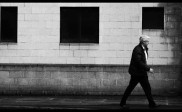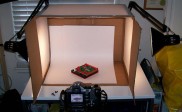Use Reflections to Create Stunning Images
Reflections are a compositional tool that can greatly enhance your images. Reflections seem to attract the viewer’s attention and entice them to linger. It could be that the reflected image is slightly distorted or different compared to the actual subject, or it could be indistinguishable from reality and therefore makes us blink in momentary confusion. In nature, reflections can be found in many scenarios; from placid lakes and seas that mirror majestic mountains and lush foliage to tiny flower likenesses caught in dewdrops.
Here are various kinds of reflective surfaces that you can play with when composing a shot:
Mirrors – these are the most common man-made tools used to show reflections and they vary in quality and size. Some mirrors are extremely clear and clean that seem to reflect back every inch of fine detail while others are diffused and hazy which softens the image of the object being reflected. There are also fun house types of mirrors that distort and stretch reflections. When including a mirror in your shot, see to it that you do not use your flash directly on the mirror since light will be reflected back at the camera and can cause serious blown out areas. Also consider your position as you shoot because you might accidentally get a shot of your own reflection when you do not intend it to happen. On the other hand, mirrors can be used to capture fascinating self-portraits. You can use one or several mirrors to create multiple reflections. Do not be afraid to experiment.

Photo by Kaiban
Metal – shiny, metallic surfaces are highly reflective. Examples of metallic objects are spoons and knives, chrome fixtures, and aluminum-cased appliances. Since these are not usually flat, reflections created by metallic objects are often imprecise. Dirt and water stains can also leave residue that can actually add visual interest, either by adding a certain mood or showing textures and shapes.

Photo by Randy Son of Robert
Water – one of the most popular substances that create reflections, water is often used in compositions in ways that make an otherwise ordinary scene come to life. It comes in so many forms that you have a lot of creative leeway for experimentation. Lakes and calm seas can be giant natural mirrors that reflect back the surroundings, from gorgeous sunsets to row boats and swans that float serenely by. These large bodies of water provide symmetry and balance to a photograph. Puddles are also popular because they reflect buildings, streets and the passing people and vehicles. Scenes we take for granted everyday suddenly take on a whole new light when successfully captured in an image of a puddle.

Photo by mikebaird
Unusual surfaces – you can find more reflective surfaces that you can take advantage of in your composition. Some are not so noticeable, which is often why they are all the more interesting when seen in a photo. Reflections captured in bubbles, eyes or a blank computer monitor can be greatly appealing since they are less commonly photographed.

Photo by Tambako the Jaguar
Reflections in a photograph can take one’s breath away with beauty and appeal since they give the image an added dimension. They can convey mystery, whimsy, or an other worldliness that makes an ordinary subject transcend into something spectacular.
Subscribe to our RSS feed OR Follow us on twitter
If you loved this post about reflections photography, don’t forget to add a comment in the section below.




very informative! thank you for the share!!